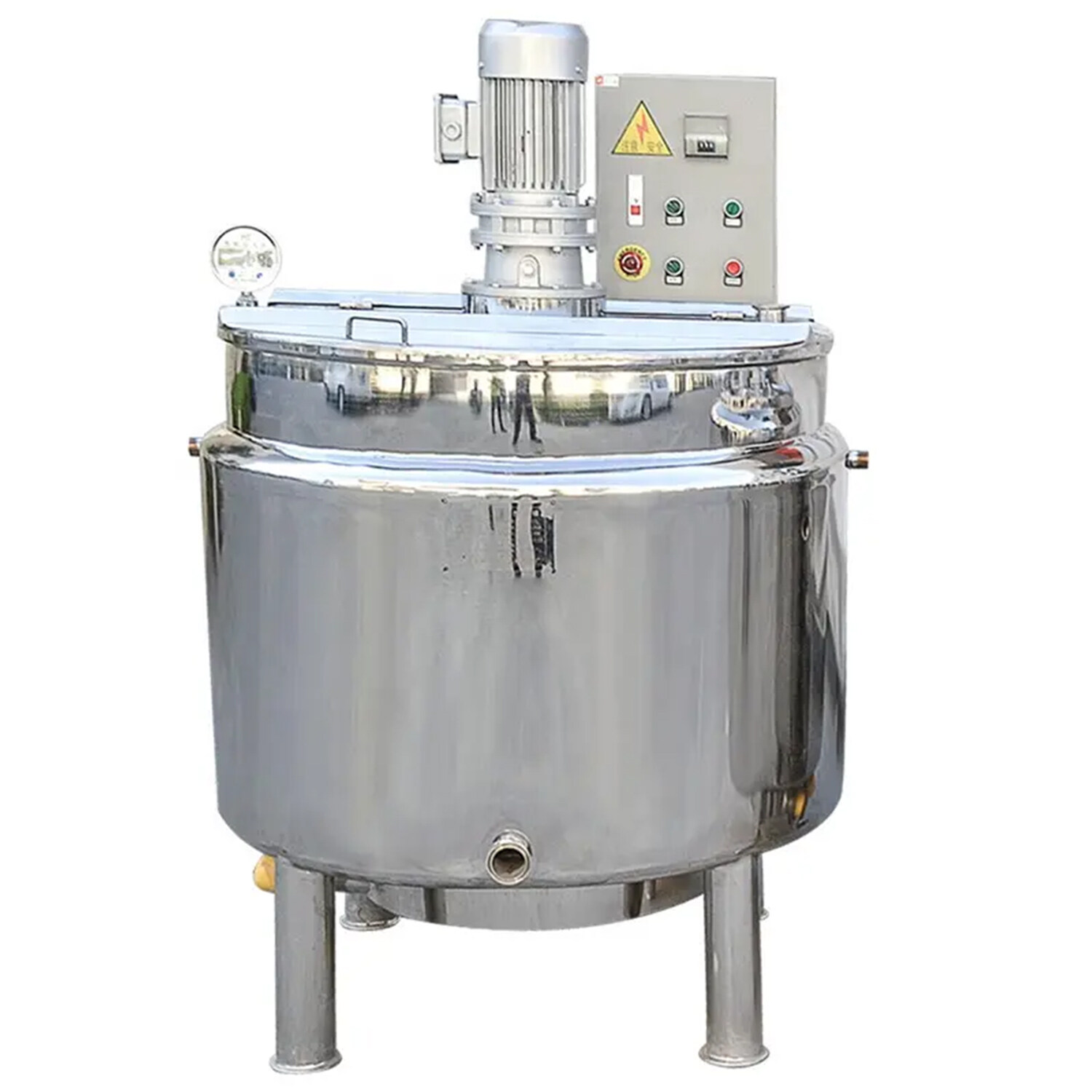Email format error
Email cannot be empty
Email already exists
6-20 characters(letters plus numbers only)
The password is inconsistent
Email format error
Email cannot be empty
Email does not exist
6-20 characters(letters plus numbers only)
The password is inconsistent


A sanitary mixing tank is a tank used to mix ingredients in a clean and safe way. It is made of stainless steel, a material that is strong, does not rust, and is easy to clean. These tanks are used in industries like food, medicine, and cosmetics where hygiene is very important. They make sure the products are safe and high quality.
In this article, we will talk about the main features, benefits, and uses of sanitary mixing tanks.
A sanitary mixing tank is designed to mix ingredients while keeping everything clean. It is mostly made of 304 or 316L stainless steel. This material is strong and does not rust, which helps keep things clean. Some tanks have insulation, while others do not. This depends on what is being mixed.
These tanks come in sizes from 50 to 20,000 liters. They can also handle pressures from -0.1 to 1.6 MPa and temperatures from -4°C to 150°C (24.8°F to 302°F).
Most sanitary mixing tanks are made from 304 or 316L stainless steel. This material is durable, does not rust, and is easy to clean. It helps keep the tank hygienic, which is very important in industries like food or medicine.
You can change the design of the tank to fit your needs. The tank shell thickness is usually 3mm, but it may vary depending on the design or pressure needed. The tank can have different types of jackets, like dimple jacket, coil jacket, or barrel jacket, to control the temperature. For insulation, you can choose polyurethane foam, thermal insulation rock wool, or pearl particles.
They come with different agitation speeds. These can range from 15-120 r/min, 0-200 rpm, or even 0-400 rpm. This gives you control over how fast the ingredients are mixed.
The tank can handle certain temperature and pressure ranges. The design work pressure is from -0.1 to 1.6 MPa, and the tank can work at temperatures from -4°C to 150°C (24.8°F to 302°F).
The inside of the tank has a smooth finish. This helps make the tank easy to clean and keeps it hygienic. The surface finish is mirror or matte, with a Ra value less than 0.4µm.
Some tanks use 3A sanitary certified mixing equipment. This certification makes sure the tank follows strict hygiene standards.
They help keep products clean. They are made from materials that do not react with ingredients, and their smooth surfaces make cleaning easier. This helps make sure the products stay pure.
These tanks help mix ingredients well. The adjustable speeds of the agitators and temperature control make sure the process is effective and the mixing is even.
They meet rules for different industries. 3A sanitary certified mixing equipment helps the tank follow the highest hygiene standards.
They are easy to clean. The smooth surfaces make it hard for dirt and bacteria to build up. This keeps the mixing process clean and safe.
These tanks can be used in many industries. They can mix many different ingredients, making them flexible.
In food production, these tanks mix ingredients for sauces, drinks, and dairy products. They help keep the products clean.
In the pharmaceutical industry, these tanks are used to make medicines like syrups and vaccines. They meet strict hygiene standards to ensure safety.
In cosmetics, tanks mix ingredients for creams, lotions, and gels. Hygiene is important to keep the products safe and clean.
In the chemical industry, they are used to mix sensitive products. They help ensure the product is made safely.

Make sure the tank material is right for the ingredients you are mixing. Some ingredients need tanks made from special materials.
Think about how much you need to produce. Sanitary mixing tanks come in sizes from 50 liters to 20,000 liters. Choose a tank based on how much you need to mix.
If you work in food or medicine, look for a tank that has 3A sanitary certified mixing equipment. This certification shows that the tank meets high hygiene standards.
The tank should be easy to clean. Look for tanks with smooth surfaces and designs that make cleaning easier. This helps keep everything safe and hygienic.